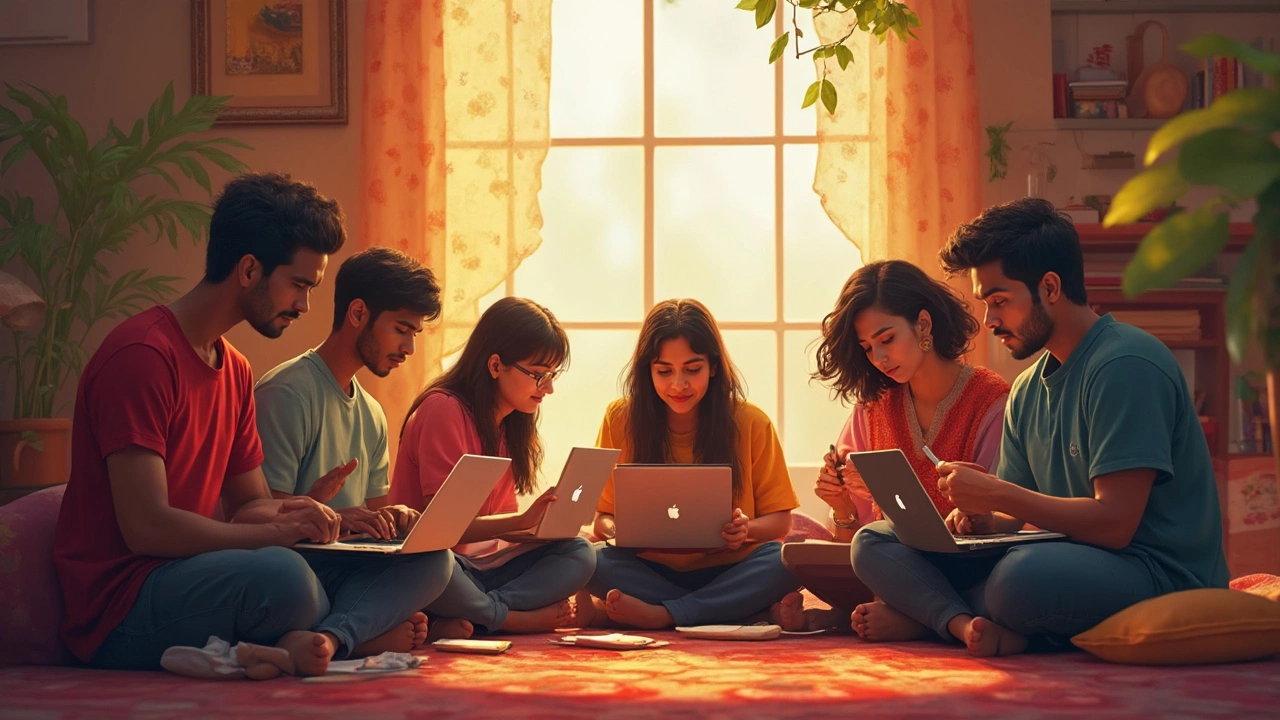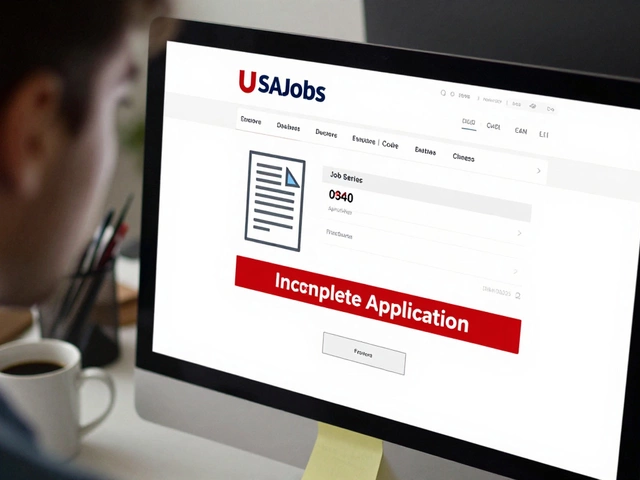Thinking that learning to code must be expensive? Not true at all. I’ve seen friends—busy parents and broke college kids alike—start coding for zero dollars. There are entire communities built around free coding, and many of them are surprisingly welcoming, even if you have zero experience. The secret? Knowing where to look and how to stick with it.
Sites like freeCodeCamp, Codecademy’s free tier, and Khan Academy have launched more than a few coder careers without emptying a single wallet. Some of these even include interactive projects, so you’re not just reading dry theory. Want proof it works? Just last year, my son Fletcher built his first simple game by following free YouTube coding playlists during school breaks.
You don’t need any special equipment, either. An old laptop or even a shared home computer will do. Most beginner tools run right in your browser—no downloads or fancy setup required. So if you’ve been worrying about startup costs, you can drop that excuse right now. It’s honestly more about your motivation and commitment than anything in your bank account.
- Why Learn Coding Without Paying
- Best Free Platforms for Coding
- How to Find Quality Resources
- Building a Study Routine (With Kids!)
- Common Free Learning Pitfalls
- Tips for Staying Motivated
Why Learn Coding Without Paying
Why fork over cash if you can get the same skills for free? Coding isn't just for folks in Silicon Valley anymore; it's become a handy tool for all kinds of jobs. According to the U.S. Bureau of Labor Statistics, software development jobs are expected to grow by 25% from 2022 to 2032. That’s way faster than most career fields, and basic programming can give you a leg up—even if you’re not aiming for a tech job.
Plenty of people hesitate to learn code because they think it means hundreds or even thousands in class fees. But free resources open those doors to everyone—no matter your budget. In fact, you can find high-quality lessons, practice projects, and even full-blown tutorials from places like universities, tech giants, and grassroots volunteers. Google, Harvard, and MIT all post free courses online.
"The best programmers are the ones who never stopped being beginners," says Quincy Larson, founder of freeCodeCamp. "You don’t need money to start learning code—you only need curiosity and persistence."
Why bother with paid classes when you can:
- Test the waters before committing real money or a career switch
- Access many of the same tools professionals use
- Avoid debt and expensive subscriptions
- Pick your own learning pace (especially helpful if you’re juggling parenting or a full-time job)
Check out these numbers to see how free coding stacks up:
| Option | Cost | Typical Content |
|---|---|---|
| freeCodeCamp | $0 | Full curriculum, projects, certifications |
| Harvard CS50 (edX) | $0 | Video lectures, assignments, community |
| Bootcamps | $8,000—$20,000 | Instructor-led, intense schedule |
| Private Tutoring | $30—$100/hr | One-on-one |
If you’re after coding for free, you’re far from alone. Loads of folks have landed industry jobs after going the free route—sometimes even faster than those paying for code bootcamps. You might as well try it first; your bank account will thank you. And who knows? Maybe your new skills will lead to that dream job or side project down the line.
Best Free Platforms for Coding
If you’re searching for a no-cost way to get into coding, you’re in luck—there are loads of legit options. And no, you don’t have to pirate software or settle for sketchy ads. Here are the ones people actually use and trust when they want to learn programming for free.
- freeCodeCamp: This one’s giant for a reason. It covers HTML, CSS, JavaScript, Python and more, all in your browser. You actually build stuff, not just answer quiz questions. When you finish each section, you can even earn certificates without paying a cent.
- Khan Academy: The coding lessons here feel super approachable, especially if you’re new. Their step-by-step videos take you through basics like JavaScript and SQL. You can mess around with code live, right on the site.
- Codecademy (free tier): Not everything on Codecademy is free, but you can get started with core interactive lessons in Python, HTML, and CSS. Their free tracks offer enough content for you to see if you actually enjoy coding before dropping cash.
- CS50 from Harvard (edX): Talk about peeking into the Ivy League without shelling out tuition! This CS50 course is famous for being beginner-friendly, while still giving you a deep dive into fundamentals like algorithms and C programming. You watch lectures, do real assignments, and join a lively support forum—all free, unless you want a paper certificate.
- Coursera & Udemy: Both places have free courses, though you need to pay for some extras like certificates. Filter for “free” before you enroll and you’ll spot legit beginner-friendly programming tracks, especially in Python and web dev.
- YouTube channels: Look for channels like The Net Ninja, freeCodeCamp.org, or Programming with Mosh. These are packed with step-by-step video tutorials, covering everything from the very basics to advanced projects.
Here’s a quick comparison so you can see which one might fit best with your style:
| Platform | Main Languages | Project-Based? | Community Support | Free Certification? |
|---|---|---|---|---|
| freeCodeCamp | JavaScript, Python, HTML, CSS | Yes | Yes (forums, chat) | Yes |
| Khan Academy | JavaScript, SQL | Yes | Yes | No |
| Codecademy (Free) | Python, HTML, CSS | Somewhat | Yes | No |
| CS50 on edX | C, Python, Scratch | Yes | Yes | No (paid option) |
| Coursera/Udemy (Free) | Depends on course | Varies | Yes | No |
| YouTube | All | Yes (project playlists) | No forums | No |
My advice? Try out two or three and see which feels easiest to stick with. If you're someone who gets bored fast, jump into a platform where you actually make stuff (even silly projects can teach you a lot). If you need lots of structure, CS50 and freeCodeCamp's step-by-step lessons are rock solid. It’s not about picking the ‘best’ one—it’s about picking what works for you, and just getting your hands messy with code.
How to Find Quality Resources
There’s tons of free coding stuff online, but not all of it is worth your time. Some courses are outdated, or the teaching is super confusing. To save yourself a headache, stick to platforms and sources trusted by real people—and don’t just chase the first tutorial that pops up in search results.
coding for free doesn’t mean grabbing anything that’s labeled "free." Check reviews and what other learners say about a course. Top-rated platforms like freeCodeCamp update their courses often and have thousands of positive stories behind them. Harvard’s CS50 (on edX and YouTube) is another goldmine—it's totally free and has been used by over a million students. You get true college-level material, minus the tuition bill.
- Look for platforms that offer hands-on practice, like Codecademy’s free projects or Khan Academy’s coding challenges. You want to write code, not just read about it.
- Check out open-source communities like GitHub. Tons of beginner-friendly guides and real projects are shared there. They even tag issues as "good first issue" so newbies can try their hand.
- Reddit forums like r/learnprogramming and Discord groups are great for honest feedback and help when you’re stuck. You don’t need to feel alone in your learning.
Worried about getting lost or scammed? Only use resources where the authors are visible and accountable—look for real names, not mystery screen names. Big names (like Mozilla or Google’s developer resources) are always solid picks.
| Platform | Main Highlights | Estimated Users |
|---|---|---|
| freeCodeCamp | Full-stack paths, hands-on projects | Over 40 million |
| Codecademy (Free Tier) | Interactive beginner lessons | About 50 million |
| Khan Academy | Beginner coding for kids & adults | 120 million |
| edX (CS50) | Harvard-level content | 1.5 million+ enrollees |
Before you commit to a resource, see if it matches your style. Some folks thrive on video, others like written guides. Test a lesson or two—if you’re not clicking with it, move on. There’s no point slogging through boring content when there are so many choices out there.

Building a Study Routine (With Kids!)
Balancing coding with the chaos of family life is a real challenge. When you have kids around—like my son Fletcher—you don’t get hours of quiet. But that doesn’t mean you have to put off learning to code. If anything, having kids just means you have to get a bit more creative and intentional with your routine.
The first trick? Set your expectations: You likely won’t get long, silent stretches to focus. But small chunks of time—say, 20 or 30 minutes—really add up. The Pomodoro Technique works wonders. Set a timer for 25 minutes to code, then spend five minutes helping with homework or filling snack requests. Do this twice in a row and you’ll be surprised how much you get done before dinner. For parents, consistency beats marathon sessions every single time.
Free online coding platforms like Scratch and Code.org even encourage family projects. Not only does this help you learn, but it also gets the kids interested—and sometimes, surprisingly helpful. According to Google’s Computer Science Education report, 81% of parents agree that learning coding skills is important for their kids, but only 40% feel confident helping them. Why not learn together?
“Establishing a regular, bite-sized study schedule is far more effective than occasional cramming, especially when young children are part of the household.”
—Harvard Family Research Project
To make a routine stick, try these simple hacks:
- Pick regular study blocks—could be early mornings or after bedtime. Put them on the calendar so everyone knows.
- Use headphones to block out distractions (cartoons, arguments, barking dogs—been there).
- Let your kids see what you’re making. Whether it’s a silly website or a quiz game, sharing your progress can be motivating for you and exciting for them.
- Break big problems into tiny pieces. Tackling short lessons or quick coding challenges in your coding for free platform feels less overwhelming than one scary project.
Here’s what a realistic week might look like for a parent trying to learn coding with kids in tow:
| Day | Session Length | Focus Task |
|---|---|---|
| Monday | 30 min (evening) | HTML basics lesson |
| Wednesday | 20 min (afternoon) | Practice with online coding exercises |
| Friday | 25 min (early morning) | Start a mini family project (like a fun quiz) |
| Weekend | Catch-up as you can | Get kids involved, experiment with Scratch |
No matter how busy life gets, little bits of effort add up fast. Coding for free isn’t just doable with kids around—it can even turn into a fun family challenge.
Common Free Learning Pitfalls
Free coding resources make it way easier to get started, but they’re definitely not perfect. One of the biggest issues? Too much choice. When you Google “learn to code,” you’ll find dozens of platforms, blogs, and video tutorials. It’s easy to jump from course to course or get stuck deciding what language to pick instead of actually learning. If you always chase the newest shiny thing, you’ll end up knowing a little about everything, but not enough to actually build stuff.
Another problem is inconsistent structure. Paid courses usually have a clear path, while some free sites are just loose collections of tutorials. That’s why people sometimes get fired up with HTML lessons, then get lost when it’s time for JavaScript. It helps to print out a simple checklist or set your own track using a reliable resource like freeCodeCamp or The Odin Project.
Feedback, or the lack of it, also trips people up. With paid bootcamps, someone checks your work. With free platforms, you’re often learning solo. This means mistakes can go unnoticed for days. To fix this, share your code on forums like Stack Overflow or even Reddit. The coding community is pretty generous about helping out beginners, you just have to ask.
And here’s a fact: only about 4% of people who start free online coding courses actually finish them. Distractions, burn-out, or feeling lost are the usual reasons. Check this quick breakdown:
| Common Problem | Pain Point | Simple Fix |
|---|---|---|
| Too many resources | Overwhelm, never sticking with one thing | Pick one path and finish it before trying another |
| No direct feedback | Not sure what you’re doing wrong | Join forums or peer groups early on |
| Losing motivation | Give up when things get tough | Build small, fun projects to keep it engaging |
If you want to stand out from all the people who try and quit, make sure you stick to just one coding for free platform at the start, share your work regularly, and actually finish a beginner project, even if it’s silly or simple. That’s more important than knowing a ton of random tutorials by heart.
Tips for Staying Motivated
Sticking with coding—especially if you’re learning for free—comes down to building habits and celebrating small wins. The truth is, most people quit when things get confusing or boring. Here’s how to keep pushing forward, even if you’re juggling life or busy helping with school homework like I do with Fletcher.
First, set short, clear goals. Don’t just say “learn JavaScript.” Try “build a calculator using JavaScript by the end of this week.” Specific goals turn huge ideas into bite-sized tasks that are way less overwhelming.
Next, track your progress. Sites like freeCodeCamp have built-in streak trackers for days you code in a row. These tiny milestones are more powerful than you might think—a Harvard study found people who tracked habits daily were 40% more likely to stick with their routines.
- Schedule coding into your day, even if it’s just 20 minutes. Consistency beats intensity.
- Use social support. Join free online groups or Discord servers to swap tips and celebrate when you finally squash that bug.
- Mix it up. Don’t be afraid to try different coding platforms or mini-projects. Burnout comes from doing the same dull lesson over and over.
- Reward yourself. Finishing a tough lesson? Treat yourself to your favorite snack or a short break.
Don’t fall into the trap of comparing your progress with others. Everyone’s timeline looks different, especially when you’re learning coding for free. Stick with it, use these tips, and you’ll push past that quitting point where most people bail.
If you get stuck, remember that the best way to learn coding for free is to just keep moving, even if it’s slow. Those tiny advances will add up before you know it.





